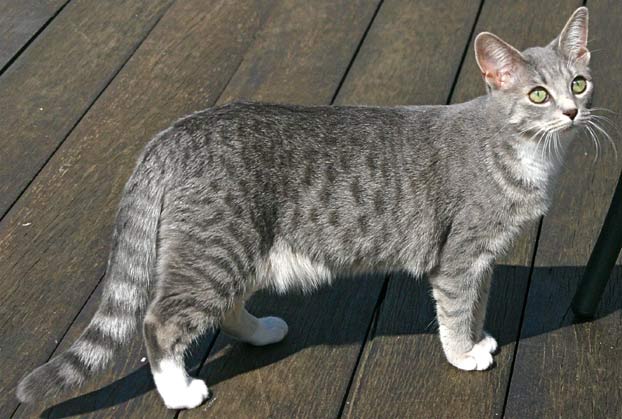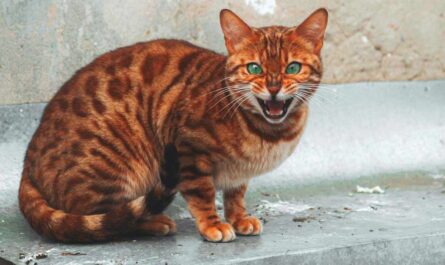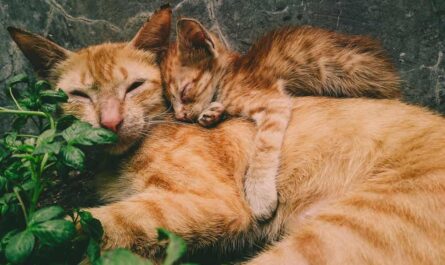Why don’t cats like their belly touched? Have you ever reached out to stroke your feline friend’s soft belly, only to be met with a startled hiss and a swiftly delivered paw swipe? The allure of a fluffy cat belly is undeniable, but for some reason, this seemingly inviting spot often transforms into a kitty landmine. This leaves us scratching our heads, wondering: why exactly don’t cats always enjoy belly rubs?
This article dives into the fascinating world of feline body language, exploring the reasons behind your cat’s potential aversion to belly rubs. We’ll embark on a journey through evolutionary origins, decipher the subtle cues your cat might be sending, and discuss alternative ways to shower your furry companion with affection. After all, building a strong and trusting bond with your cat is all about understanding their unique communication style and respecting their boundaries. So, buckle up, cat lovers, as we unravel the mystery of the enigmatic feline belly!
Belly Secrets: Decoding the Mystery of the Untouchable Turf
Ever wonder why your attempts at a belly rub are met with a swat or a hiss? Cats can be enigmatic creatures, and their aversion to belly touches can leave us scratching our heads (or perhaps nursing a scratched hand!). This section delves into the fascinating evolutionary reasons behind this behavior, helping you understand your feline friend’s perspective.
The Wild Side: A Legacy of Protection
Cats, despite their domestication, retain some of their wild ancestors’ instincts. In the natural world, a cat’s belly is a vulnerable area, exposed during fights or encounters with predators. This soft underbelly offers little protection for vital organs, making it an area they instinctively guard fiercely. Think of it as a cat’s built-in suit of armor – best left uncompromised!
The Reflex Response: Untangling the Primordial Pouch
That loose fold of skin on your cat’s belly? It has a name: the primordial pouch. This pouch serves multiple purposes, including aiding with balance and agility during leaps and bounds. However, it also plays a role in the belly-touch reflex. When pressed or stimulated, the primordial pouch can trigger a defensive reaction in some cats. This reflex, a leftover from their wild heritage, is simply their way of protecting themselves from a perceived threat.
Important Note: It’s crucial to distinguish between a playful swipe and a defensive reaction. A playful swat might be accompanied by playful body language like tail swishing or playful growls. A defensive reaction, however, might involve flattened ears, dilated pupils, and a more aggressive hiss. Always respect your cat’s boundaries and avoid pushing them past their comfort zone.
Not All Cats Are Created Equal: Variations in Tolerance
Just like people, cats have unique personalities and preferences. While some felines might tolerate (or even enjoy!) belly rubs, others might find them utterly off-limits. Breed variations can also play a role. Some breeds, like Ragdolls or Maine Coons, are known for their gentle and tolerant nature, while other breeds might be more skittish.
Remember: The key to understanding your cat is through observation. Pay attention to their body language – a twitch of the tail, a flattening of the ears – these subtle cues can tell you everything you need to know about their belly rub preferences. Even if your cat isn’t a belly rub fan, there are plenty of other ways to show them affection, like chin scratches, gentle ear strokes, or playtime with their favorite toys.
Unveiling the Feline Language: Deciphering Your Cat’s Body Language
Cats are masters of nonverbal communication. Their every twitch, swish, and purr holds a secret message, just waiting to be deciphered. Understanding these feline cues is essential, especially when it comes to navigating the sometimes-tricky territory of belly rubs. This section delves into various body language signals that can help you understand if your cat is truly receptive to a belly touch, or if it’s best to save the snuggles for another time.
The Hissy Fit: When “Pet Me Not” Becomes Crystal Clear
Some cats adore belly rubs, luxuriating in the blissful sensation. However, others view a belly touch as an invasion of their personal space. Here are some telltale signs your cat might be expressing discomfort with a belly rub:
- The Hissing Fury: A hiss is a universal sign of feline displeasure. If your cat lets out a hiss when you approach their belly, it’s a clear message to back off. Respect their boundaries and avoid pushing the issue.
- Swatting Savvy: A playful swat might be endearing, but a swat combined with a tense body or flattened ears indicates your cat feels threatened. Heed this warning and redirect your attention to a more welcome petting spot, like the head or chin.
- Ear Play: A cat’s ears are incredibly expressive. Flattened ears pressed against the head signal fear or aggression. If your cat’s ears go flat when you reach for their belly, it’s time to stop the petting session.
- The Swishing Tale: A swishing tail is a common sight, but pay attention to the intensity of the movement. A rapidly swishing tail, particularly if it’s puffed out, often indicates irritation or potential aggression. If your cat’s tail is communicating discomfort, listen to its message!
Remember: Cats may also vocalize their displeasure with yowls or growls. It’s important to distinguish between playful growls and defensive growls. Playful growls are often accompanied by body language cues like playful swats and batting paws. A defensive growl, on the other hand, is accompanied by the aforementioned signs of discomfort and should be taken seriously.
The Tail Tells All: Unveiling the Secrets of Tail Talk
A cat’s tail is a dynamic communication tool. Learning to “read” tail posture can provide valuable insights into your cat’s emotional state:
- The Twitchy Tale: A twitching tail can indicate anything from mild curiosity to nervousness. If your cat’s tail starts twitching when you approach their belly, it might be a sign of apprehension. Proceed with caution and observe their other body language cues.
- The Puffed-Up Protest: A puffed-up or “bottlebrush” tail is a clear warning sign. This posture indicates fear or aggression, and it’s best to avoid any interaction that might trigger a negative reaction.
- The Rapid-Fire Flick: A rapidly flicking tail back and forth often signals agitation or even impending aggression. If your cat’s tail starts moving like a metronome gone haywire when you reach for their tummy, it’s time to back away and give them some space.
Remember: The tail is just one piece of the puzzle. Consider all body language cues in conjunction with the context of the situation to gain a comprehensive understanding of your cat’s feelings.
The Body Betrayal: When Actions Speak Louder Than Purrs
Even if your cat appears relaxed, some physical signs can betray their true feelings about a belly rub:
- Tensing Up: Notice any tensing of muscles in your cat’s body when you reach for their belly. This is a clear sign they’re feeling uncomfortable and bracing for potential contact.
- Flattening to the Ground: If your cat suddenly flattens their body against the ground or shrinks away from your touch, it’s their way of communicating that they’d prefer you to stop. Respect their boundaries and offer a chin scratch or petting session in a more welcome spot.
- The Bite is Worse Than the Bark (or Purr): This one is pretty self-explanatory. If your cat attempts to bite or scratch when you touch their belly, it’s a definitive “no” and a clear sign they’ve reached their limit.
Remember: Understanding your cat’s body language is crucial for building a trusting and respectful relationship. Pay attention to these subtle cues and avoid putting your cat in a situation that might make them feel stressed or anxious.
Under the Fur: Exploring Reasons Beyond the Belly Rub
While the belly rub is a common source of feline frustration, there can sometimes be more to the story. This section delves into potential underlying medical reasons why your cat might not be a fan of abdominal attention.
Feline Furry-osity: When Medical Issues Lurk Beneath the Surface
Our feline companions are masters of stoicism, often masking discomfort with subtle signs. If your cat seems particularly averse to belly rubs, it might be worthwhile considering a visit to your veterinarian to rule out any medical reasons for their aversion. Here are some potential culprits:
- Skin Allergies: Just like us, cats can suffer from skin allergies triggered by various irritants. If your cat has sensitive skin, belly rubs might exacerbate itchiness or discomfort, making them a less than pleasurable experience.
- Digestive Discomfort: Gastrointestinal issues like constipation, inflammation, or even hairballs can cause tenderness in the abdominal area. A gentle touch on the belly might be quite painful for a cat experiencing digestive distress.
- Bladder Infections: Urinary tract infections can also cause discomfort in the lower abdomen. If your cat winces or shows signs of pain when their belly is touched, it could be a sign of a bladder infection that requires veterinary attention.
Remember: These are just a few examples, and a thorough examination by your veterinarian is crucial to diagnose any underlying medical conditions that might be causing your cat pain or discomfort in the abdominal area.
Post-Surgical Sensitivity: Healing Takes Time
If your cat has recently undergone abdominal surgery, it’s perfectly normal for them to be more sensitive to touch in that area. The healing process requires rest and time, and belly rubs might be uncomfortable during this period. Focus on alternative ways to show your cat affection, like gentle head scratches or petting their back. With time and proper healing, your cat might become more receptive to belly rubs in the future.
Remember: Always prioritize your cat’s comfort. If they seem uncomfortable with belly rubs after surgery, respect their boundaries and wait until they’re fully healed before attempting again.
The Importance of Checkups: Unlocking the Mystery
The wonderful world of veterinary medicine can be a valuable resource in understanding your cat’s dislike of belly rubs. A checkup with your veterinarian allows for a comprehensive examination, potentially revealing any medical conditions that might be causing your cat pain or discomfort in the abdominal area. Through open communication with your vet, you can create a plan to address any underlying medical issues and ensure your cat receives the care they need to live a happy and healthy life.
Remember: Scheduling regular checkups with your veterinarian is an essential part of responsible cat ownership. These checkups not only help prevent potential health problems but can also shed light on why your cat might be avoiding belly rubs altogether. By working with your vet, you can ensure your feline friend receives the best possible care and, hopefully, discover alternative ways to show them affection that they’ll truly appreciate.

Decoding the Belly Rub: Understanding Your Cat’s Affection Preferences
Cats, those enigmatic bundles of fur and independent spirit, can sometimes leave us scratching our heads (quite literally!) when it comes to their affection preferences. The internet overflows with adorable images of cats sprawled out, bellies exposed in a seemingly universal invitation for a belly rub. However, many a cat owner has learned the hard way that this isn’t always the case. This section dives into the mystery of the feline belly rub, exploring alternative ways to shower your cat with love and build a strong bond.
The Belly Rub Conundrum: Why Not Always a Purrfect Choice?
The truth is, a cat’s exposed belly isn’t necessarily an open invitation for a scratch session. This vulnerable area is instinctive for them to protect, and a sudden touch can trigger a defensive reaction, including swatting or even a nip. Here’s a closer look at why belly rubs might not be your cat’s cup of tea:
- Vulnerability on Display: In the wild, a cat’s belly is their most sensitive area, unguarded by fur. Exposing their belly can be a sign of trust and relaxation in a safe environment, but it doesn’t always translate to an invitation for touch.
- Mixed Signals: Sometimes, cats might lie on their backs in a playful posture, rolling around and batting at your hand. This playful behavior can be misinterpreted as a desire for a belly rub, but it’s important to be mindful of their body language to avoid overstimulation.
Remember: Always pay attention to your cat’s cues. Flattened ears, a swishing tail, or a tense body are all signs that a belly rub isn’t welcome. Respect your cat’s boundaries and avoid forcing affection.
The Head Scratch Symphony: A Universal Sign of Love
While belly rubs might be a gamble, most cats wholeheartedly embrace a good head scratch. Scratching behind the ears or gently under the chin can be a source of immense pleasure for your feline friend. Think of it as a symphony of purrs and blissful head nudges as you discover your cat’s preferred scratching spots.
The Gentle Chin Nuzzle: A Token of Trust and Affection
The chin nuzzle is a subtle yet significant gesture in the feline world. If your cat bumps their head against your hand or leans in for a gentle chin nuzzle, consider it a token of trust and affection. Return the gesture with a slow blink or a soft head scratch to solidify your bond.
The Power of Playtime: Strengthening Bonds Through Shared Fun
Engaging in playtime is a fantastic way to show your cat you care and strengthen your connection. Interactive toys like feather wands, laser pointers, or catnip-filled mice can ignite your cat’s playful instincts and provide a fun bonding experience. As you bat the toy around and mimic playful prey, you’re not just entertaining your cat, you’re fulfilling their natural hunting desires and showering them with love in a way they understand.
The Purrfect Grooming Session: Building Trust Through Gentle Care
Some cats genuinely enjoy gentle grooming sessions. Brushing your cat with a soft brush removes loose fur, promotes relaxation, and can be a wonderful bonding experience. However, some cats might find brushing overstimulating. Start with short sessions, letting your cat dictate the pace, and always use a gentle touch.
Remember: Not all cats enjoy grooming. Pay attention to your cat’s body language and respect their boundaries. If they seem stressed, end the session and try again another time.
Respecting Boundaries: Every Cat is an Individual
The key to understanding your cat’s affection preferences lies in respecting their individuality. Just like humans, cats have their own personalities and ways of expressing love. Pay attention to your cat’s body language. A slow blink, a gentle head nudge, or a rumbling purr are all signs of affection. Avoid forcing interactions and let your cat initiate contact on their terms. The bond you build through mutual respect and understanding will be far more rewarding than a forced belly rub.
Belly Rub Bliss (Maybe): Navigating the Enigmatic World of Feline Affection
Ah, the coveted belly rub. For some cat owners, it’s the ultimate sign of feline trust and affection. For others, it’s a guaranteed recipe for a swat or a hiss. So, why the mystery surrounding this seemingly simple gesture? This section explores the reasons behind a cat’s potential aversion to belly rubs, along with strategies to build trust and navigate the fascinating world of feline affection.
Building Trust: Unlocking the Secrets to Kitty Cuddles
The truth is, not all cats are created equal when it comes to belly rubs. Some felines luxuriate in the feeling, while others see it as a vulnerable and potentially threatening invasion of personal space. The key to unlocking belly rubs (if that’s your cat’s preference) lies in building trust and respecting your cat’s unique body language. Here are some tips to get you started:
-
Positive Reinforcement is King (or Queen): Forget about forcing the belly rub. Instead, focus on positive reinforcement techniques. When your cat approaches you for affection on their terms, perhaps nuzzling your hand or brushing against your leg, reward them with treats, praise, or gentle head scratches. This creates positive associations with physical interaction and encourages them to seek out more affection in the future.
-
Slow and Steady Wins the Race: Patience is paramount when introducing belly rubs. Start with brief, gentle touches on your cat’s chest or neck, gradually working your way down to the belly area only if your cat seems receptive. Pay close attention to their body language. Signs of contentment include purring, relaxed ears, and gentle head nudges. If your cat tenses up, swishes their tail, or flattens their ears, it’s time to back off and try again another time.
-
Respecting Boundaries is Key: Not every cat enjoys belly rubs, and that’s perfectly okay! Some felines are simply more reserved when it comes to physical affection. Learn to appreciate your cat’s unique personality and find other ways to show them you care. This could include chin scratches, gentle ear rubs, or playtime with their favorite toys.
Remember: Building trust with your cat takes time and respect for their boundaries. Focus on creating positive experiences and letting your cat initiate affection on their terms. You might be surprised at how much love and purrs a patient approach can unlock!
The Symphony of Whispers: Understanding Your Cat’s Language of Love
Cats, with their enigmatic purrs and independent spirit, can sometimes baffle even the most devoted pet parent. Their love may not always be as readily apparent as a wagging tail or a slobbery kiss, but it exists nonetheless. This final chapter delves into the importance of understanding your cat’s unique communication style and respecting their boundaries, paving the way for a deeper and more fulfilling connection.
Decoding the Feline Dictionary: A World Beyond Belly Rubs
Unlike our canine companions, belly rubs aren’t a universal sign of affection in the feline world. A cat’s belly is one of their most vulnerable areas, and some cats simply aren’t comfortable having it touched. Here’s the thing: that doesn’t mean they don’t love you! Cats express affection in a multitude of subtle ways:
- The Slow Blink: Often referred to as a “kitty kiss,” a slow blink from your cat is a sign of trust and contentment. The next time you’re relaxing together, try slowly blinking at your cat and see if they return the gesture. It’s a heartwarming way to communicate love and understanding.
- The Head Bump: Nuzzling their head against you is a feline way of marking you with their scent and claiming you as their own. Consider it a furry declaration of affection!
- The Gentle Knead: Remember those rhythmic kneading motions your cat makes on your lap or a soft blanket? This behavior, often referred to as “making biscuits,” is a leftover instinct from kittenhood, associated with nursing from their mother. It can be a sign of contentment and happy memories. Fitness – Meditation – Diet – Weight Loss – Healthy Living – Yoga
- The Chattery Chirp: That high-pitched chirp or trill your cat makes when they see you isn’t just random noise. It’s their way of greeting you and expressing excitement. It’s their happy meow, just in a different dialect!
Remember: Every cat is an individual. Pay close attention to your cat’s body language and vocalizations to decipher their unique way of expressing love and contentment.
The Enduring Melody: Building Trust and a Fulfilling Bond
While belly rubs may not be on the menu for every cat, building trust and a strong bond with your feline friend is an enriching experience. Here’s how to cultivate a purrfect relationship:
- Positive Reinforcement is Key: Reward good behavior with treats, praise, or gentle petting in areas your cat enjoys, like behind the ears or under the chin. This positive reinforcement strengthens your bond and encourages desired behaviors.
- Respect Their Boundaries: Cats are all about consent. If your cat seems agitated, swishes their tail, or flattens their ears, it’s their way of saying “enough.” Respect their boundaries and back off. Forcing interaction can damage trust.
- Quality Time, Cat Style: Cats don’t crave constant attention, but they do appreciate dedicated playtime and interaction. Engage them with feather toys, puzzle feeders, or interactive games that stimulate their natural hunting instincts. Short, focused play sessions throughout the day strengthen your bond and provide mental and physical enrichment for your cat. Cat accessories on Amazon
- Create a Safe Haven: Provide your cat with a cozy bed, scratching posts, and hiding spots where they can feel secure. A safe and comfortable environment allows your cat to relax and feel loved.
Remember: The journey to building a strong bond with your cat takes time, patience, and mutual respect. By understanding their communication style, respecting their boundaries, and showering them with positive reinforcement, you’ll cultivate a loving and fulfilling relationship that transcends belly rubs. The purrs, head bumps and gentle kneading will follow, creating a symphony of love unique to you and your feline companion.
Other Interesting Articles
- Cat Flu: Symptoms, Medicine, Treatment, Text Kit, Prevention
- Cat Herpesvirus 1 (FHV-1): Causes, Symptoms, Treatment
- Do Cats Enjoy Mating? A Guide To Feline Sexual Behavior
- Benefits of a High-Protein Diet for Your Cat: A Complete Guide
- How Many Kittens Can A Cat Give Birth To: When To Worry
- Why is My Cat Drinking Much Water All of A Sudden? To-Dos
- Cat Dystocia (Difficult Birth): Causes, Symptoms, Treatment
- 23 Signs That Indicate Something is Wrong with Your Cat
- Cat Eyes Signs: 15 Things Your Cat Is Saying With Its Eyes
- How Cat Eyes Work: How to Care for Your Feline’s Eyes
- Why Does My Cat Sit On My Shoulder? Reasons, To-Dos
- Why is My Cat So Clingy? Behavior, Reasons, Solutions
- Cat Vomiting: Types, Causes, Symptoms, Treatments, Cure
- Feline Estrous Cycle: What To Expect When A Cat Is in Heat
- Weight Gain in Cats: Obesity Signs, Causes & What to Do
- 13 Ways to Tell if A Cat is Pregnant: Signs, Behavior, Guide
- Cat Pregnancy: Signs, Nipples, Behavior, Care, What To Do
- Nesting Behavior in Cats: Signs, Reasons, What To Do
- How To Help Your Cat Put Their Best Paw Forward: 12 Steps
- How To Improve Your Cat’s Behavior in 14 Systematic Steps



